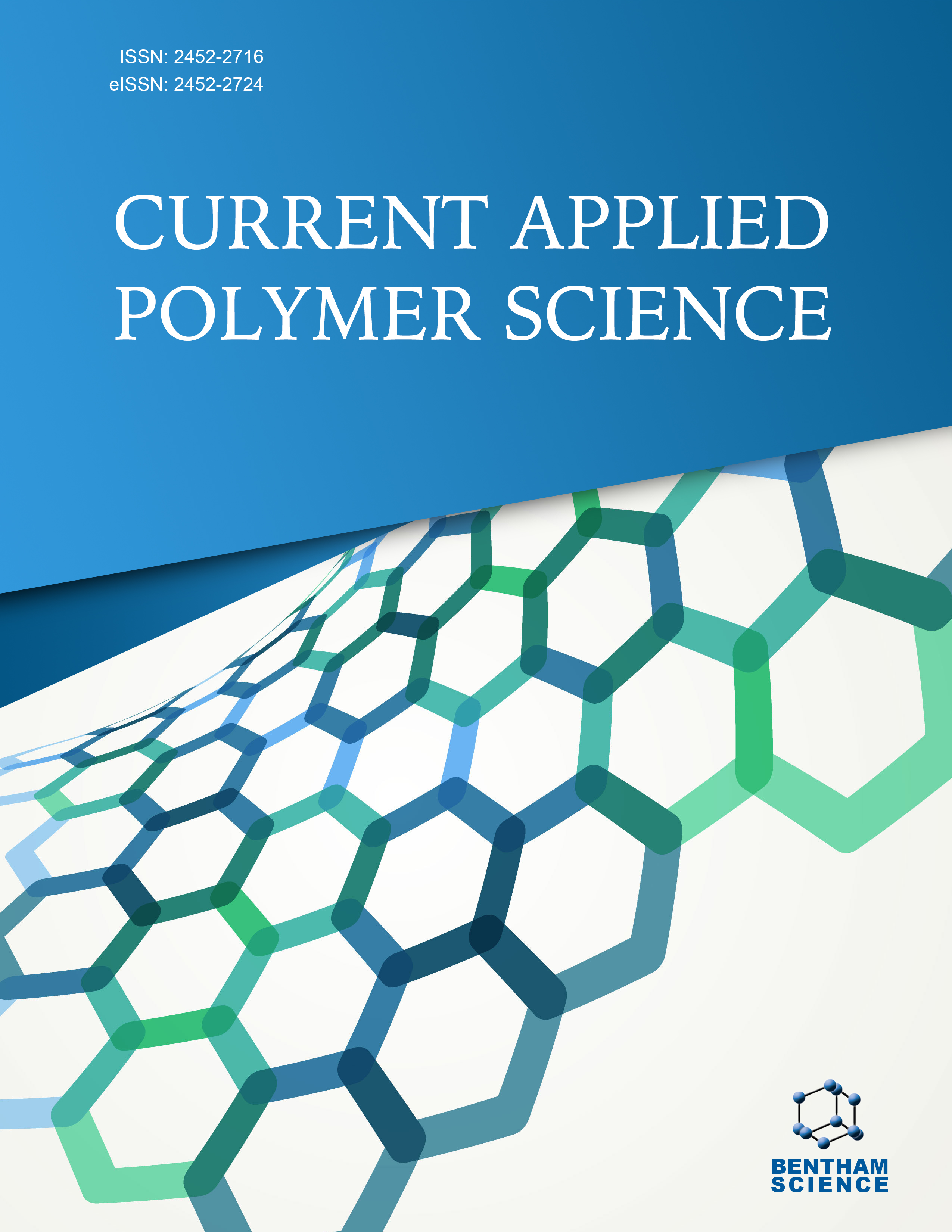- Home
- A-Z Publications
- Current Applied Polymer Science
- Previous Issues
- Volume 4, Issue 2, 2021
Current Applied Polymer Science - Volume 4, Issue 2, 2021
Volume 4, Issue 2, 2021
- Medicine, Integrative & Complementary Medicine
-
-
-
Scaffolds Designing from Protein-loadable Coaxial Electrospun Fibermats of poly(acrylamide)-Co-poly(diacetone acrylamide) and Gelatin
More LessAuthors: Yuji Tanikawa, Akiko Obata, Kenji Nagata, Toshihiro Kasuga and Toshihisa MizunoBackground: Aiming at in situ regenerative therapy, the tailored design of cytokine-releasing scaffolds is still one of the crucial issues to be studied. A core-shell fibermat is one of the attractive platforms for this purpose. But, very few detail the importance of choosing the right material for the shell units that can endow efficient release properties. Objective: In this study, we characterized the effectiveness of core-shell fibermat Read More
-
-
-
Polysarcosine: The Best Alternative of Poly (Ethylene Glycol)
More LessAuthors: Manu Singhai and Sankha BhattacharyaPolysarcosine (psar) is a non-ionic hydrophilic polypeptoid with numerous biologically relevant properties. Polysarcosine is poly (n-methylated glycine) and has been reported first by Weslay and co-workers in the 1920s. Polysarcosine was first synthesized via ring-opening polymerization (rop) of sarcosine n-carboxyanhydride, using high-vacuum techniques. Overall, findings highlight the potential of poly(sarcosine) as an al Read More
-
-
-
Essential Polymers Helping Patients with Obesity
More LessAuthors: Maria Nascimento, Kaushik Pal and Fernando GomesBackground: In the last decades, the prevalence of obesity showed a significant increase in several countries. This fact is very worrying since there is an association between obesity and metabolic alterations, such as type II diabetes, hypertension, cardiovascular diseases, some types of cancer, and glucose intolerance. Knowledge of causes, preventive strategies, and treatment have been objects of studies by researchers in sev Read More
-
-
-
Performance of Resins Based on Poly(Divinylbenzene-co-Methyl Methacrylate) for Removal of Calcium and Magnesium Ions from Water
More LessBackground: The mixing of the formation water present in oil and gas reservoirs and the injected water (often seawater) can form inorganic incrustations, during enhanced oil recovery operations. In this case, the cations (calcium, barium, strontium, iron, magnesium, etc.) of the injected water react with the anions (mainly sulfate and carbonate) of the formation water and produce inorganic salts that can precipitate in th Read More
-
-
-
Fabrication and Mechanical Properties of POSS Coated CNTs Reinforced Expancel Foam Core Sandwich Structures
More LessAuthors: Wanda Jones, Bedanga Sapkota, Brian Simpson, Tarig A. Hassan, Shaik Jeelani and Vijaya RangariBackground: Sandwich structures are progressively being used in various engineering applications due to the superior bending-stiffness-to-weight ratio of these structures. We adapted a novel technique to incorporate carbon nanotubes (CNTs) and polyhedral oligomeric silsesquioxanes (POSS) into a sandwich composite structure utilizing a sonochemical and high temperature vacuum assisted resin transfer molding technique. O Read More
-
-
-
Eucalyptus Bark as Source of Bio-oil or Phenolic Compounds
More LessAuthors: Alcides L. Leão, Ivana Cesarino, Otávio A. T. Dias, Mirela B. Carnietto and Mohini SainBackground: Eucalyptus bark and scraps are generated in the production of medium- density fiberboard (MDF). An approach aiming to add value to such wastes was studied, following the concepts of circular economy and biomass cascade strategy. Bio-oil and phenolic resin were produced by pyrolysis from two types of biomass, Eucalyptus bark and MDF waste. As is well known, conventional phenolic resins are normally obtain Read More
-
-
-
Mass-suspension Polymerization Process as an Efficient Tool to Produce Polymer/Clay Nanocomposites
More LessBackground: This work presents the preparation and characterization of the polymeric nanocomposites based on methyl methacrylate (MMA), ethyl acrylate (EA), and natural and modified clays. The clays used to prepare the composite were natural green bentonite (GBC-N) and organophilic clays modified with ammonium quaternary salts: Praepagen (GCB-P), Dodigen (GCB-D) and Praepagen/Dodigen mixture 1:1 in weight (G Read More
-
-
-
Investigation of Artificial Ageing of PVC Stabilized with Epoxidized Sunflower Oil as Biobased Derivative
More LessAuthors: Nadia Gallouze, Naima Belhaneche-Bensemra, Sophie Commereuc and Vincent VerneyObjective: The objective of this work is to study the artificial ageing of semi-rigid and plasticized polyvinyl chloride (PVC) stabilized with epoxidized sunflower oil (ESO) as a biobased derivative in combination with zinc and calcium stearates. Methods: For comparison, a formulation of PVC plasticized and stabilized with epoxidized soya bean oil (ESBO) was considered. Artificial ageing was carried out during the 304 hours. Sa Read More
-
Volumes & issues
Most Read This Month
Article
content/journals/caps
Journal
10
5
false
en


